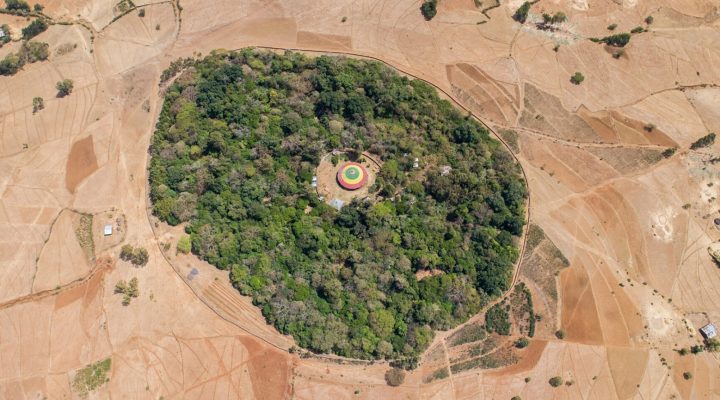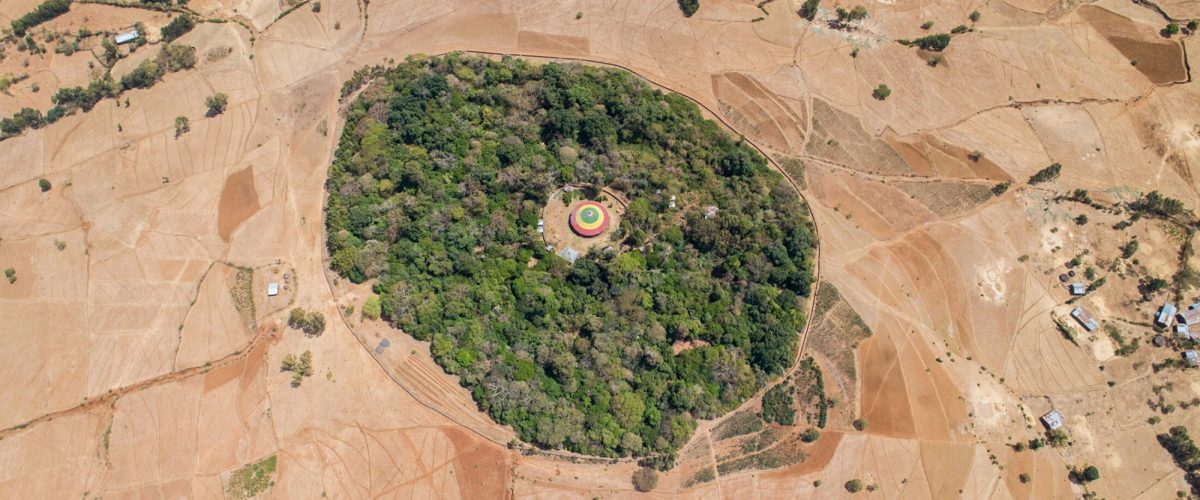One of the many blessings of my current home is its location. No matter what direction you look, you will see trees. And not just a few in our yard, but a forest.
We are surrounded by majestic pines, maples and oaks, and flowering dogwoods and redbuds in the spring. These trees are home to countless species of birds, insects, a few bats, an occasional bear, as well as snakes, rabbits, deer, raccoons and possums. My property is connected to others in the area and is protected from logging or industry. Together, we are all a part of the forests of the Appalachian Mountain range.

Katherine Smith
Whenever possible, I sit on my porch and send up prayers of gratitude for the beauty and peace I am fortunate enough to call home. Others around the world are not so fortunate. For some, anxiety and fear of wildfires have replaced the peace and tranquility of their forests. In other places, the constant struggle to feed one’s family means the local forest must be cut down — either for the immediate source of funds or to make room on valuable land to grow additional crops or raise livestock.
One place in the world has held onto some of their precious forests — the church forests of Ethiopia. If you take a look at portions of Ethiopia from the sky, you will see an unusual site: thousands of pockets of old-growth forests surrounding small, often colorful churches. These small patches of green, considered sacred spaces by the church members, provide a sense of peace and calm while also safeguarding some of the insect and animal life of the area.
“As recently as 100 years ago, however, these church forests were part of a vast forest stretching across the nation.”
As recently as 100 years ago, however, these church forests were part of a vast forest stretching across the nation. As protectors of the remaining trees, these small pockets are all that is left as the need for land for a rapidly growing population has become more important than the trees.
The need to maintain our worldwide forest ecosystems is now recognized as vitally important, not only to help slow the effects of climate disruption, but also for the life and vitality of the people and animals that call this planet home. We now know that deforestation affects local and regional climates, leads to further land degradation and has been associated with a rise in infectious diseases such as dengue fever and malaria.
As vital as it is to save and replenish our forests, it is difficult to explain to poor families in rural Brazil or India or Sub-Saharan Africa why they shouldn’t burn down their trees in order to raise more food. Fortunately, there are many options that will help increase tree growth and income for local communities, including better land management practices combining forests with agriculture, although they are not always easy.
It takes years, however, even decades, to regrow trees and restart an ecosystem.
The year 2050 is only a little over 25 years away. Children born in 2024 could live in a world vastly different from ours today. The strides in the last few years in AI technology are sure to continue, as are advances in medicine, transportation and even entertainment and leisure activities. Only through the pages of science fiction novels can we imagine what the world could be.
There is another reality, though, that must be considered. One where too little was done to slow climate disruption. In this reality, 9.7 billion people, the estimated population of the year 2050, will struggle to find enough food to eat. While some portions of the world will be able to produce more food, large sections of the planet will no longer be able to support agriculture. Add to this more extreme and erratic weather events, flooded coastlines and water access issues. The forests that churches in Ethiopia tried so desperately to save will be under increased pressure to be turned into farmland.
In the recent season of Easter, our Christian journey took us from the pain and suffering of Christ’s death on a tree on the hill of Golgotha to the heights of celebration of an empty tomb and a risen Lord and Savior. Loss and hope together. The church forests of Ethiopia give us a similar view.
Looking across a landscape dotted with green treetops and abundant life, we celebrate their efforts to maintain peace and serenity, a holy space, around their churches. Turn the picture a little, however, and the view is one of churches completely separated from each other and even from the people working the land.
Which picture should we cling to? How should churches in America draw from this example? Perhaps we can pull from both views. We can focus on our own spaces, keeping the church lawns trimmed and the sidewalks clear, with cool gardens providing peace and solitude for those in need. At the same time, we can push our “trees” outward to our communities, enlarging our abundance through actions that will lead to a future where our children and grandchildren can thrive.
Plant real trees. Work with other churches to foster environmentally friendly projects. Grow the space between your church and the next one. Break down the silos currently separating us, and join with others to save what is left. Spread hope for the future and not despair.
Katherine Smith serves as executive director of the Baptist Creation Care Initiative.
Related article:
How evangelicals promoted, then abandoned environmental stewardship


